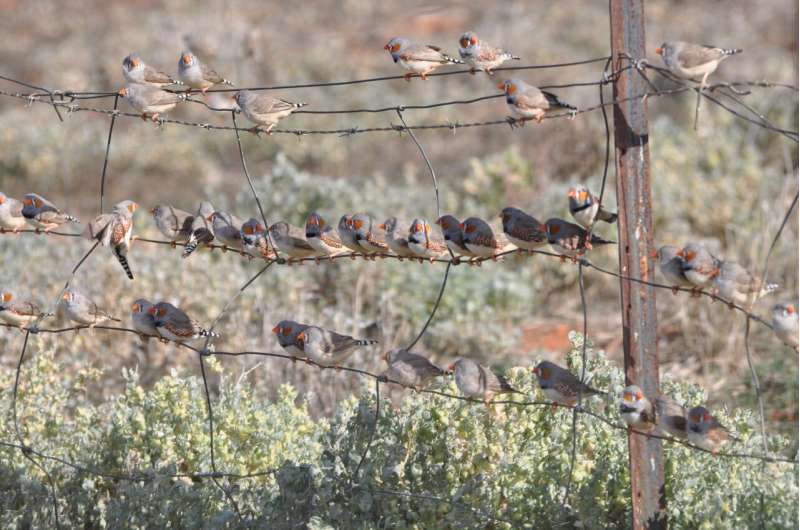How stress is transmitted from one animal to another is the study topic of behavioural ecologist and collective behaviour researcher Dr Hanja Brandl. Credit: Hanja Brandl
Stress is a widespread phenomenon that occurs when, for example, humans feel threatened or overwhelmed, have too much work or are in imminent danger. We communicate to others that we are stressed through our behavior and physiological changes. Thus, stress can also convey information and even be useful for survival in certain situations. On the other hand, the massive spread of stress, which can be transmitted from one individual to others, not infrequently leads to dangerous situations in groups, such as mass panics.
Animals also experience and transmit stress. This is the research focus of collective behavior researcher Dr. Hanja Brandl from University of Konstanz. In a paper recently published in the journal Proceedings of the Royal Society B: Biological Sciences, she reports that the transmission of stress is a phenomenon that can be observed across species. She carried out the study jointly with her co-authors Jens Pruessner, professor of neuropsychology at the University of Konstanz, and Damien Farine, professor of evolutionary biology at the University of Zurich.
Stress is evolutionarily deeply rooted
"It has been repeatedly shown that stress can be transmitted from one human to another," Brandl says. "Often, a similarly strong physiological response is triggered, even though you have never experienced the stress yourself."
But what is known about stress among animals? As most animals spend at least part of their lives associating socially with others, she concluded that stress is also transmitted among animals. And indeed, Brandl's thesis was confirmed by previous work that she evaluated for this study. "Other animals in the group can be just as stressed as the friend who experienced something bad. Stress is evolutionarily deeply rooted and the process is similar in all vertebrates," she concludes.
Brandl and her colleagues will therefore conduct further empirical studies on birds, mice and humans to find out the effects of stress on groups, for example, depending on the number of individuals affected by stress. She assumes that this is a central factor in the transmission or buffering of stress, as stress is not only amplified in groups, but can also be reduced.
Identifying stressors to strengthen wildlife conservation
When are wild animals stressed? To be mentioned primarily are naturally occurring threats to which they are exposed, such as predators. When such factors occur more frequently than usual, stress becomes unhealthy. Human influences raise the level of stress: "Increasing changes in the habitat or noise and light pollution also have an impact, as these massively affect the environment of the animals," Brandl explains.
Animal groups are separated through human development; they have to cross roads and endure noise, for instance. It is not uncommon for animals to sleep right next to streetlights. "Animals are partially flexible and can adapt to circumstances," says Brandl. In addition to that, each individual reacts differently to stressful situations. "Through stress transmission, however, more animals may experience stress, even group members that are not directly affected by the disturbance. And at some point, the stress response—the adaptations that otherwise help animals better escape stressors like predators—no longer gives them a survival advantage."
This not only endangers the animals' health, but also changes the social structure of groups. "If we know how the underlying mechanisms work and also take the social dynamics in groups into account, we can better protect animals," says Brandl.
For humans, too, insights from the animal world are useful, she says. "With humans, we can't measure the functionality of groups under stress well in natural scenarios." Therefore, the researchers are now continuing their studies, intensively observing animals that, for example, are foraging together, raising their brood or synchronizing their movements with others. In the future, this will make it easier to respond to and help with stress transmission in groups of people.
More information: Hanja B. Brandl et al, The social transmission of stress in animal collectives, Proceedings of the Royal Society B: Biological Sciences (2022). DOI: 10.1098/rspb.2021.2158
Journal information: Proceedings of the Royal Society B
Provided by University of Konstanz
























